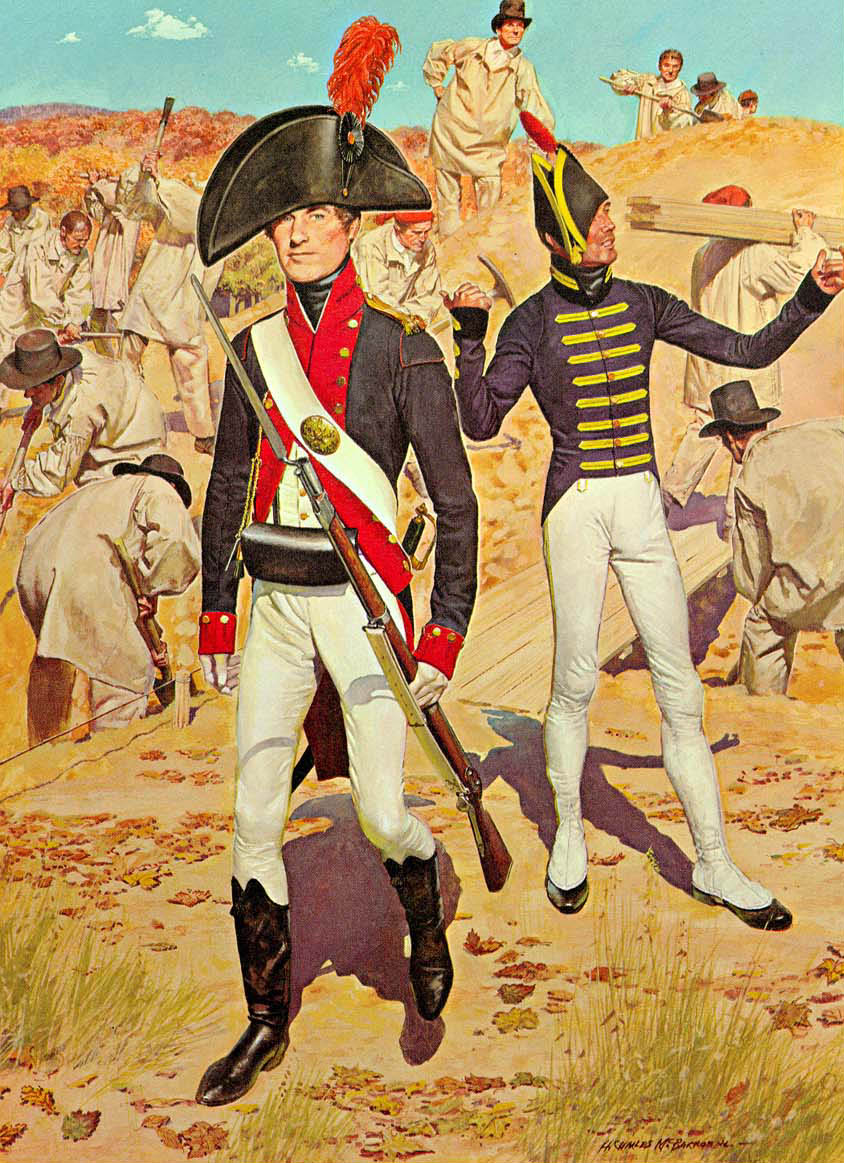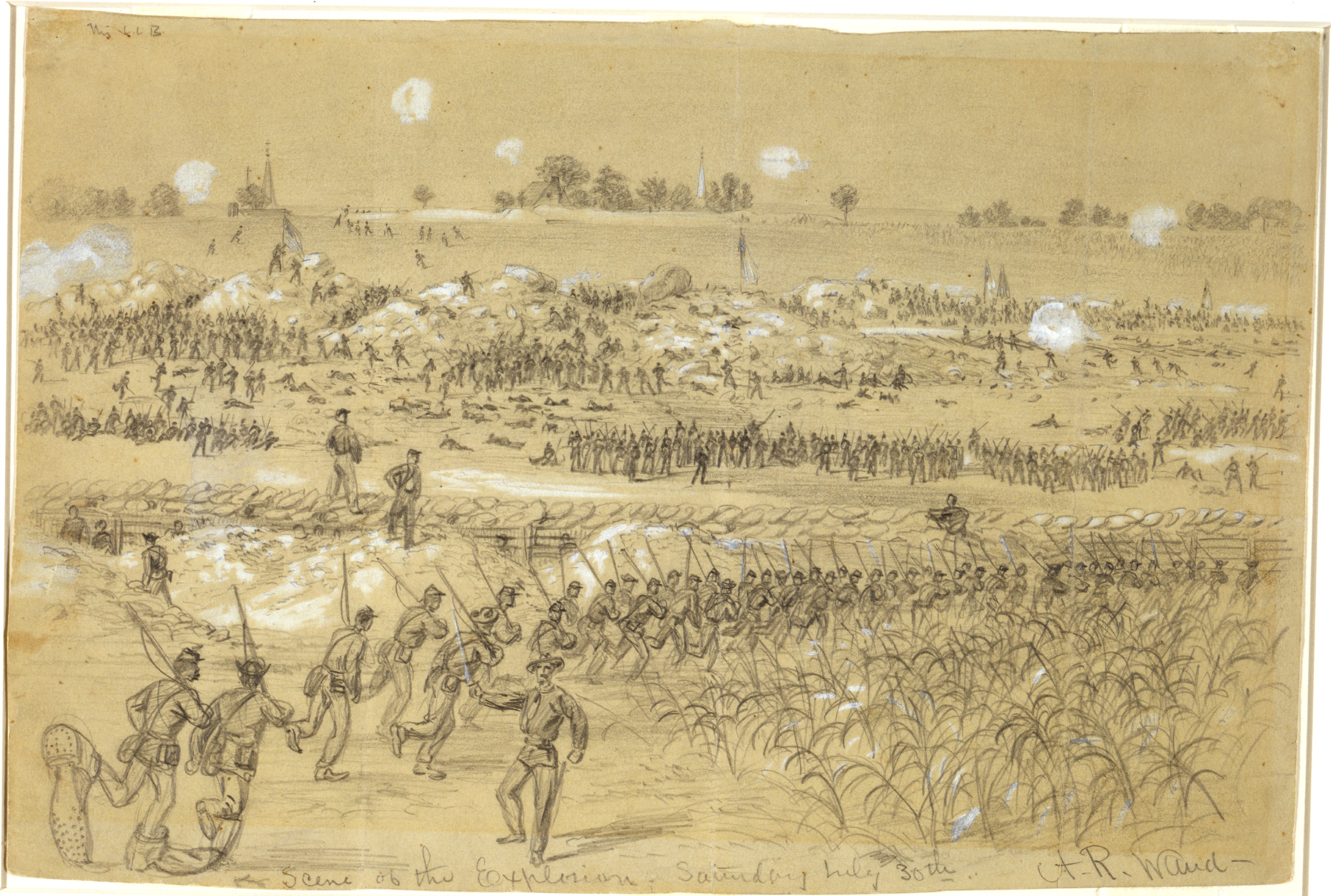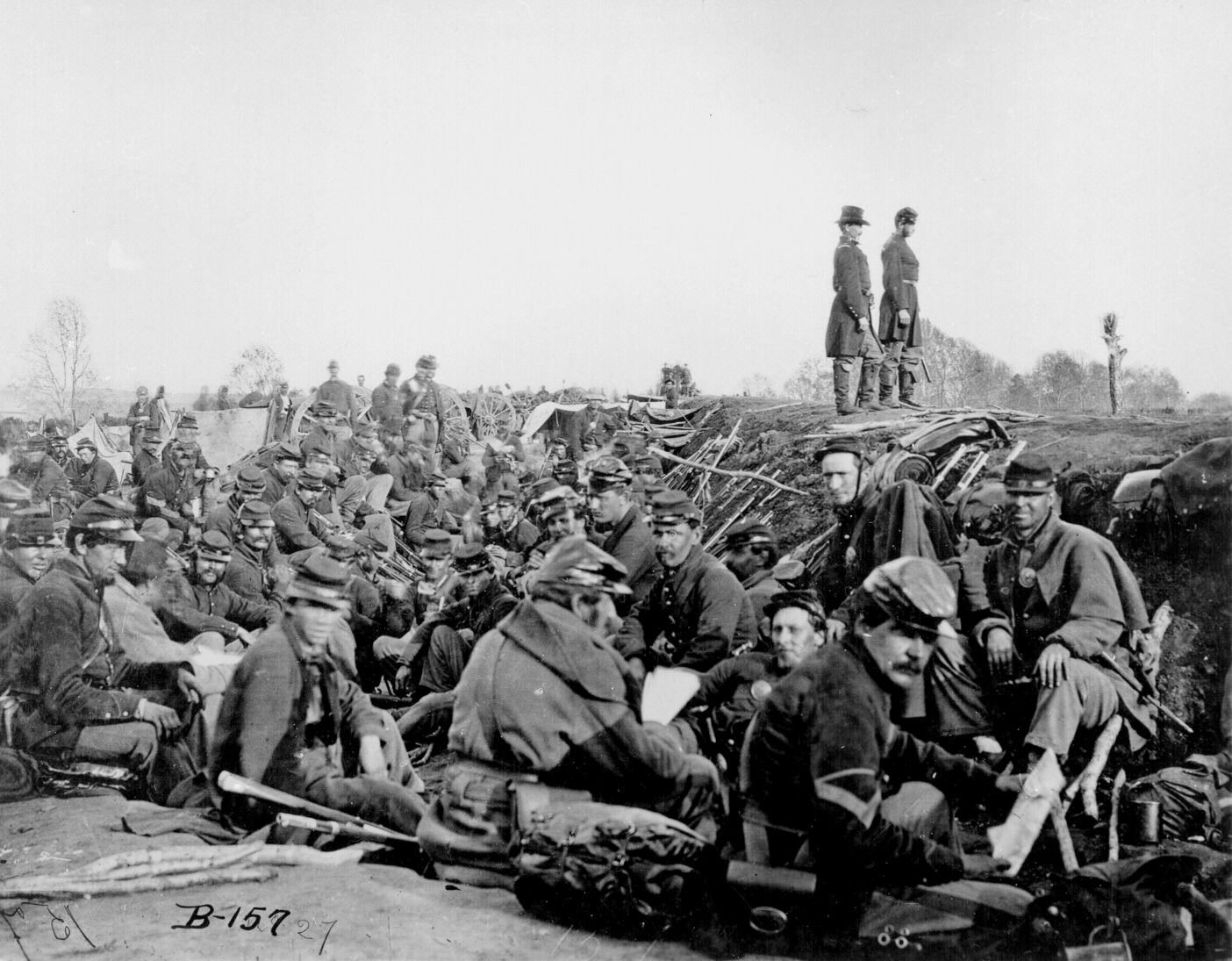|
Edward Porter Alexander
Edward Porter Alexander (May 26, 1835 – April 28, 1910) was an American military engineer, railroad executive, planter, and author. He served first as an officer in the United States Army and later, during the American Civil War (1861–1865), in the Confederate Army, rising to the rank of brigadier general. Alexander was the officer in charge of the massive artillery bombardment preceding Pickett's Charge, on the third day of the Battle of Gettysburg, and is also noted for his early use of signals and observation balloons during combat. After the Civil War, he taught mathematics at the University of South Carolina in Columbia, spent time in Nicaragua, and wrote extensive memoirs and analyses of the war, which have received much praise for their insight and objectivity. His ''Military Memoirs of a Confederate'' were published in 1907. An extensive personal account of his military training and his participation in the Civil War was rediscovered long after his death and pub ... [...More Info...] [...Related Items...] OR: [Wikipedia] [Google] [Baidu] |
Washington, Georgia
Washington is the county seat of Wilkes County, Georgia, United States. Under its original name, Heard's Fort, it was for a brief time during the American Revolutionary War the Georgia state capital. It is noteworthy as the place where the Confederacy voted to dissolve itself, effectively ending the American Civil War. The population was 4,134 as of the 2010 census. The city is often referred to as Washington-Wilkes, to distinguish it from other places named Washington. History Heard's Fort was established in 1774 by colonist Stephen Heard. The settlement served as the temporary capital of the new state of Georgia from February 3, 1780, until early 1781. American Revolutionary War The Battle of Kettle Creek, one of the most important battles of the American Revolutionary War to be fought in Georgia, was fought on February 14, 1779, in Wilkes County, about from present-day Washington. The American Patriots were victorious, taking 75 prisoners and killing roughly 70 Loyalis ... [...More Info...] [...Related Items...] OR: [Wikipedia] [Google] [Baidu] |
Battle Of Fredericksburg
The Battle of Fredericksburg was fought December 11–15, 1862, in and around Fredericksburg, Virginia, in the Eastern Theater of the American Civil War. The combat between the Union Army, Union Army of the Potomac commanded by Major general (United States), Maj. Gen. Ambrose Burnside and the Confederate States Army, Confederate Army of Northern Virginia under General officers in the Confederate States Army#General, Gen. Robert E. Lee included futile frontal attacks by the Union army on December 13 against entrenched Confederate States of America, Confederate against a feature of the battlefield that came to be remembered as the 'sunken wall' on the heights overlooking the city. It is remembered as one of the most one-sided battles of the war, with Union casualties more than twice as heavy as those suffered by the Confederates. A visitor to the battlefield described the battle as a "butchery" to President of the United States, U.S. President Abraham Lincoln. Burnside planned to ... [...More Info...] [...Related Items...] OR: [Wikipedia] [Google] [Baidu] |
History Of Military Ballooning
Balloons and kites were the first inventions used in aerial warfare and their primary role was reconnaissance. Balloons provided a reliable and stable means of elevating an observer high over the battlefield to obtain a birds-eye view of troop positions and movements. An early instrument of aerial intelligence collection, they were also useful for creating accurate battlefield maps, an important ingredient for battlefield success. Incendiary balloons also have a long history. The incendiary balloons carry hot air or something that can catch fire to destroy enemy territory. They could also hold small bombs for combat. The history of military ballooning dates back to the late 18th century, when the Montgolfier brothers, Joseph-Michel and Jacques-Étienne, first demonstrated the potential of hot-air balloons for military use. The first recorded military use of balloons was during the French Revolutionary Wars, when the French military used balloons to gather intelligence on the move ... [...More Info...] [...Related Items...] OR: [Wikipedia] [Google] [Baidu] |
Pickett's Charge
Pickett's Charge was an infantry assault on July 3, 1863, during the Battle of Gettysburg. It was ordered by Confederate General Robert E. Lee as part of his plan to break through Union lines and achieve a decisive victory in the North. The charge was named after Major General George Pickett, one of the Confederate Army's division commanders. The assault was aimed at the center of the Union Army's position on Cemetery Ridge, which was believed to be a vulnerable point in the Union defenses. As the Confederate troops marched across nearly a mile of open ground, they came under heavy artillery and rifle fire from entrenched Union forces. The open terrain offered little cover, making the Confederate soldiers easy targets, and their ranks were quickly decimated. Although a small number of the Confederate soldiers managed to reach the Union lines and engage in hand-to-hand combat, they were ultimately overwhelmed. The charge ended in a disastrous defeat for the Confederates, wit ... [...More Info...] [...Related Items...] OR: [Wikipedia] [Google] [Baidu] |
United States Military Academy
The United States Military Academy (USMA), commonly known as West Point, is a United States service academies, United States service academy in West Point, New York that educates cadets for service as Officer_(armed_forces)#United_States, commissioned officers in the United States Army. The academy was founded in 1802, and it is the oldest of the five United States service academies, American service academies. The Army has occupied the site since establishing a fort there in 1780 during the American Revolutionary War, as it sits on strategic high ground overlooking the Hudson River north of New York City. West Point's academic program grants the Bachelor of Science degree with a curriculum that grades cadets' performance upon a broad academic program, military leadership performance, and mandatory participation in competitive athletics. Candidates for admission must apply directly to the academy and receive a nomination, usually from a member of United States Congress, Congr ... [...More Info...] [...Related Items...] OR: [Wikipedia] [Google] [Baidu] |
Battle Of Chaffin's Farm
A battle is an occurrence of combat in warfare between opposing military units of any number or size. A war usually consists of multiple battles. In general, a battle is a military engagement that is well defined in duration, area, and force commitment. An engagement with only limited commitment between the forces and without decisive results is sometimes called a skirmish. The word "battle" can also be used infrequently to refer to an entire operational campaign, although this usage greatly diverges from its conventional or customary meaning. Generally, the word "battle" is used for such campaigns if referring to a protracted combat encounter in which either one or both of the combatants had the same methods, resources, and strategic objectives throughout the encounter. Some prominent examples of this would be the Battle of the Atlantic, Battle of Britain, and the Battle of France, all in World War II. Wars and military campaigns are guided by military strategy, whereas ... [...More Info...] [...Related Items...] OR: [Wikipedia] [Google] [Baidu] |
Battle Of The Crater
The Battle of the Crater took place during the American Civil War, part of the Siege of Petersburg. It occurred on Saturday, July 30, 1864, between the Confederate Army of Northern Virginia, commanded by General Robert E. Lee, and the Union Army of the Potomac, commanded by Major General George G. Meade (under the direct supervision of the general-in-chief, Lieutenant General Ulysses S. Grant). After weeks of preparation, on July 30 Union forces exploded a mine across from Union Major General Ambrose E. Burnside's IX Corps sector, blowing a gap in the Confederate defenses of Petersburg, Virginia. Instead of being a decisive advantage to the Union, this precipitated a rapid deterioration in the Union position. Unit after unit charged into and around the crater, where most of the soldiers milled in confusion in the bottom of the crater. Grant considered this failed assault as "the saddest affair I have witnessed in this war." The Confederates quickly recovered, and launche ... [...More Info...] [...Related Items...] OR: [Wikipedia] [Google] [Baidu] |
Richmond-Petersburg Campaign
The Richmond–Petersburg campaign was a series of battles around Petersburg, Virginia, fought from June 9, 1864, to March 25, 1865, during the American Civil War. Although it is more popularly known as the siege of Petersburg, it was not a classic military siege, in which a city is encircled with fortifications blocking all routes of ingress and egress, nor was it strictly limited to actions against Petersburg. The campaign consisted of nine months of trench warfare in which Union forces commanded by Lieutenant General Ulysses S. Grant assaulted Petersburg unsuccessfully and then constructed trench lines that eventually extended over from the eastern outskirts of Richmond, Virginia, to around the eastern and southern outskirts of Petersburg. Petersburg was crucial to the supply of Confederate General Robert E. Lee's army and the Confederate capital of Richmond. Numerous raids were conducted and battles fought in attempts to cut off the Richmond and Petersburg Railroad. M ... [...More Info...] [...Related Items...] OR: [Wikipedia] [Google] [Baidu] |
Battle Of Cold Harbor
The Battle of Cold Harbor was fought during the American Civil War near Mechanicsville, Virginia, from May 31 to June 12, 1864, with the most significant fighting occurring on June 3. It was one of the final battles of Union Lt. Gen. Ulysses S. Grant's Overland Campaign, and is remembered as one of American history's most lopsided battles. Thousands of Union soldiers were killed or wounded in the frontal assault of June 3 against the fortified positions of Confederate Gen. Robert E. Lee's army—an action that intensified criticism of Grant's perceived indifference to heavy casualties. On May 31, as Grant's army once again swung around the right flank of Lee's army, Union cavalry seized the crossroads of Old Cold Harbor, about 10 miles northeast of the Confederate capital of Richmond, Virginia, holding it against Confederate attacks until the Union infantry arrived. Both Grant and Lee, whose armies had suffered enormous casualties in the Overland Campaign, received reinforc ... [...More Info...] [...Related Items...] OR: [Wikipedia] [Google] [Baidu] |
Battle Of Spotsylvania Court House
The Battle of Spotsylvania Court House, sometimes more simply referred to as the Battle of Spotsylvania (or the 19th-century spelling Spottsylvania), was the second major battle in Lt. Gen. Ulysses S. Grant and Maj. Gen. George G. Meade's 1864 Overland Campaign of the American Civil War. Following the bloody but inconclusive Battle of the Wilderness, Grant's army disengaged from Confederate General Robert E. Lee's army and moved to the southeast, attempting to lure Lee into battle under more favorable conditions. Elements of Lee's army beat the Union army to the critical crossroads of the Spotsylvania Court House in Spotsylvania County, Virginia, and began entrenching. Fighting occurred on and off from May 8 through May 21, 1864, as Grant tried various schemes to break the Confederate line. In the end, the battle was tactically inconclusive, but both sides declared victory. The Confederacy declared victory because they were able to hold their defenses. The United States decl ... [...More Info...] [...Related Items...] OR: [Wikipedia] [Google] [Baidu] |
Overland Campaign
The Overland Campaign, also known as Grant's Overland Campaign and the Wilderness Campaign, was a series of battles fought in Virginia during May and June 1864, towards the end of the American Civil War. Lieutenant general (United States), Lt. Gen. Ulysses S. Grant, general-in-chief of all Union Army, Union armies, directed the actions of the Army of the Potomac, commanded by Major general (United States), Maj. Gen. George G. Meade, and other forces against Confederate States Army, Confederate General (CSA), Gen. Robert E. Lee's Army of Northern Virginia. Although Grant suffered severe losses during the campaign, it was a strategic Union victory. It inflicted proportionately higher losses on Lee's army and maneuvered it into a siege at Richmond in the American Civil War, Richmond and Petersburg, Virginia, in just over eight weeks. Crossing the Rapidan River on May 4, 1864, Grant sought to defeat Lee's army by quickly placing his forces between Lee and Richmond and inviting an ope ... [...More Info...] [...Related Items...] OR: [Wikipedia] [Google] [Baidu] |








